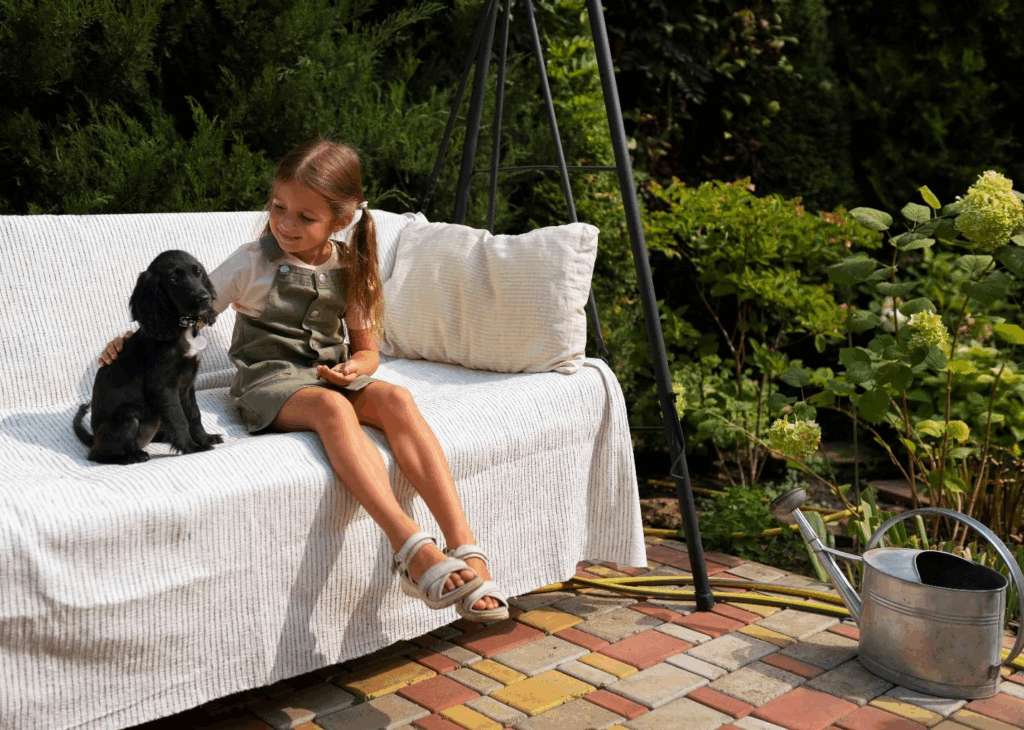
If you are renting a home or an apartment, you need to make it appealing to tenants as much as possible. This is where you need to cater to the expectations of potential tenants. In such situations, you may think about adding an outdoor living space. It can be as simple as a deck or a patio, or even a small courtyard.
However, before making that decision, you will start wondering if the decision to do so is really worth the investment. Read the article below as we take a look at the benefits and drawbacks of adding an outdoor living space to your rental.
The Pros of Adding an Outdoor Living Space
First, let’s explore the benefits of adding an outdoor living space to your rental.
Enhances Quality of Life
An outdoor living space can impress tenants. They can have a place to relax after work or sip their morning coffee with an extra space to breathe fresh air. A small patio or balcony can also help.
Outdoor living spaces are extremely valuable in urban areas. Many renters who live in crowded neighborhoods would prefer it, because it can add more value to the tenants who decide to rent your unit. If you can include a deck, a shaded pergola, or a small furnished courtyard, you can significantly improve the well-being of residents. It can even double as a play area for families with kids. On the other hand, some families will use the outdoor living space as convenient spots for dining. No matter what, these areas can make life more enjoyable for tenants.
Social and Entertainment Area
Outdoor living spaces also make great places for social gatherings. Renters love having the option of inviting friends over for a barbecue, birthday celebration, or even a casual evening outside. A patio or deck helps turn the property into a hub for entertaining without requiring much indoor rearranging.
This setup can reduce the need to pay for outside venues when hosting events. Tenants who feel proud to host events in their rental home may also stay longer. It will ultimately lead to improved tenant retention. Social spaces are no longer just add-ons as they’re now seen as essential features in modern rentals.
Can Be a Unique Selling Point of Your Property
In a crowded rental market, landlords often need to differentiate themselves from the competition. An outdoor living space can serve as that unique selling point. Properties with patios, decks, or garden areas photograph better in listings and generate more inquiries. Renters may be willing to pay a premium for the added benefit, especially in cities where green spaces are scarce.
Outdoor living areas are also highly marketable in climates with mild weather. In places such as Texas, California, and Florida, a renter might expect such a feature. For properties in cooler regions, offering an outdoor space might help the listing stand out among others. Outdoor areas can create a sense of luxury or exclusivity without requiring the same expense as major indoor renovations.
The Cons to Consider Before Adding an Outdoor Living Space

Now you are aware of the benefits of adding outdoor living spaces. Similarly, there are drawbacks as well. Let’s explore them in detail below.
Financial Investment
The first drawback that property owners need to consider is cost. Creating outdoor living spaces can be expensive since you need to choose durable furniture. Building a deck, patio, or balcony can be expensive. Even a basic concrete slab can run into thousands of dollars once you factor in construction, design, permits, and finishing touches. Adding furniture, lighting, or landscaping on top of that increases the budget.
The return you get for your investment will not be guaranteed all the time since not all tenants are ready to pay a higher rent for an outdoor area. In some situations, the cost of improvements would outweigh the increase in rental income. Hence, you need to weigh whether this is a “want” or a “need” feature in their rental strategy.
Restrictions on the Lease Agreement
Property owners must also consider lease restrictions before moving forward. Rental agreements can complicate how tenants use outdoor areas. For instance, certain neighborhoods or homeowner associations have rules regarding noise, fire pits, or even the decoration of spaces. Local regulations may restrict the use of grills, pets, or plant installations in outdoor areas.
There is also a possibility for tenants to bring their own expectations to outdoor living spaces. For example, some would want to host their own large gatherings, while others would require just freedom of the garden space. If you don’t include proper guidelines in the lease agreement, conflicts or misunderstandings can arise. This can lead you to administrative headaches in the long run.
Continuous Outdoor Maintenance Needs
Outdoors means exposure to the elements, and that always comes with extra upkeep. Patios and decks require regular cleaning, sealing, or painting to prevent wear and tear. Furniture needs protection from rain, mold, or sun exposure. Landscaping becomes an ongoing responsibility if grass, plants, or flower beds are included in the design. Bay Property Management Group Philadelphia suggests taking your time to research more about the ongoing maintenance that an outdoor living area requires.
Maintenance costs can add up quickly if the property owner is responsible for repairs or landscaping. Even when tenants are tasked with keeping areas clean, not every renter takes the same pride in maintaining their space. This can lead to outdoor spaces looking run-down, which hurts the property’s overall appeal. Landlords should be prepared to budget not only for installation but also for ongoing maintenance.
Final Words
Based on the benefits and drawbacks, you can decide whether it is worth adding an outdoor living space to your rental property. It is a great option available to improve tenant satisfaction and foster social activity. Having an outdoor living space can make your rental unit more competitive. However, it still requires a significant financial investment with continuous maintenance. Compare these pros and cons to make the right decision that meets your preferences.